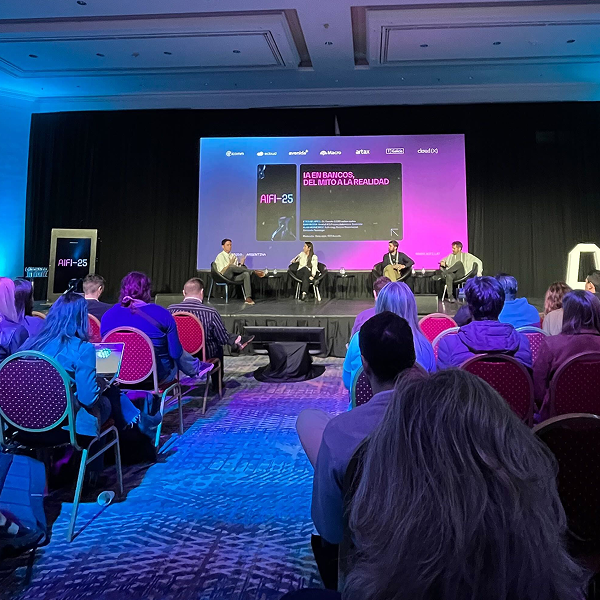Remember the office? That place where you used to spend 40+ hours a week before the pandemic? The smell of spring in the air, birds chirping outside your window, sharing a magical moment with a colleague when working late on a Tuesday, feeling your boss’s breath when they’re chewing you out for a late design submission, traveling two hours through three different types of transportation to get there… Ah, the wonders of office life!
The Corporate Conga Line Back to the Office
What do 3M, Amazon, Starbucks, SCC, Meta, Zoom, and Nike have in common? No, it’s not that all their CEOs are bald. They’re all part of the great migration back to the office. According to a survey done by Resume Builder in August, 87% of companies will have returned to office by 2025. A KPMG survey goes even further – 64% of CEOs worldwide think everyone will be back by 2026. And people are not happy about it

As employers have scaled back the flexibility they offered during the height of the coronavirus pandemic, workplace well-being has diminished nationwide, according to a report published last month by the Human Capital Development Lab at Johns Hopkins Carey Business School in partnership with Great Place to Work. The annual survey of more than 1.5 million people at over 2,500 firms showed that from 2019 through 2023, workplace well-being peaked in 2020 before dwindling in the last three years.
The Post-Pandemic Amnesia
When we emerged from that thing called a pandemic, it seemed we had learned some valuable lessons. Remote work proved to be one of the most profitable discoveries for both employees and companies.
It was a source of savings for business owners who realized they were burning money on meaningless rent. But apparently, those lessons had an expiration date. Former Google CEO Eric Schmidt is loudly proclaiming that remote work is killing Google. CEOs like Meta’s Mark Zuckerberg and Amazon’s Andy Jassy are essentially telling their employees, “We need to be together because… well, because we need to be together!” The circular logic would be amusing if it weren’t affecting millions of lives.
As employers have scaled back the flexibility they offered during the height of the coronavirus pandemic, workplace well-being has diminished nationwide, according to a report published last month by the Human Capital Development Lab at Johns Hopkins Carey Business School in partnership with Great Place to Work. The annual survey of more than 1.5 million people at over 2,500 firms showed that from 2019 through 2023, workplace well-being peaked in 2020 before dwindling in the last three years.
The Arguments
Let’s hear out the corporate reasoning. These larger organizations cite improved productivity, higher revenue, and a strong culture as drivers for RTO. The shift towards in-person work is being advocated by some who argue that face-to-face interactions may foster creativity, enhance collaboration, and strengthen company culture in ways that are difficult to replicate remotely.
James Rigby, CEO at SCC, claims it’s about fostering a “greater level of collaboration and interaction, particularly for the younger people who need that contact to progress.”
“When we want to really, really innovate on interesting products, I have not seen an ability for us to do that when we’re not in-person,” says AWS’s Matt Garman. He said said nine out of 10 workers he has spoken with support the new policy. This brilliant insight apparently led them to increase their office requirement from three days to five. Because if three days of innovation are good, five must be better, right?
Here’s where it gets interesting. According to BambooHR, both in-office and remote workers report spending about 76% of their time actually working. Plot twist: in-office workers spend an extra hour socializing compared to their remote counterparts. So much for that productivity argument!
Even more telling? 22% of HR professionals admit they have no metrics to measure the success of their RTO policies. That’s right – they’re making massive organizational changes with zero way to measure if they’re working. In the meantine, 8 in 10 employers lost talent to return-to-office mandates, and the cost of replacing them is substantial.
Even hybrid is not showing real impact. About 20 percent of employees don’t comply with hybrid configurations, according to a Stanford study, and more than half don’t comply with five-day office requirements. In response, some companies have taken a harder line, tracking office attendance through badge swipes and incorporating that data into performance reviews. This could become a growing trend; one study of 800 business leaders found 80 percent of companies plan to track in-office attendance in 2024.
“But what about spontaneous collaboration?” they cry, imagining their employees having brilliant eureka moments by the water cooler. Funny how these same companies managed to develop vaccines, launch rockets, and create groundbreaking technologies during remote work. But surely, Janet from accounting bumping into Bob from IT in the elevator is the key to innovation we’ve been missing.
But what is behind? Here’s a fun math problem: How do you justify billions in real estate investments? Easy! Force thousands of employees to commute daily to use them. It’s like buying an expensive treadmill and feeling guilty about not using it – except this treadmill costs millions in maintenance, utilities, and cleaning services.
The Hidden Agenda: Quiet Firing 2.0
Here’s where it gets sinister. A quarter of VP and C-suite executives plan to use RTO mandates as a smokescreen for workforce reduction. It’s brilliant in its simplicity: make the office mandatory, wait for resignations, save on severance. They’re calling it “back-channel layoffs.” At least layoffs come with severance packages – this is just constructive dismissal with extra steps.
Amazon employees hope leaders will reconsider a policy effective in 2025, or they will quit. In December 2023, many Amazon Web Services workers resigned when the three-day RTO policy launched. With the updated five-day policy, we might see a spike in those numbers.
Employees are not so sure
Workers are skeptical of the motives behind RTO policies beyond the additional monetary cost. A MyPerfectResume study found that 77% of workers believe RTO policies give employers more control. 64% think their employers don’t trust them to work from home. In response, companies are getting creative with surveillance: tracking badge swipes, monitoring office attendance, and even incorporating presence into performance reviews. Nothing says “we value you” like treating your workforce like teenagers at a mall.
Welcome to the era of “productivity theater.” We’re seeing the emergence of what’s called the “Green Status Effect” – remote workers keeping their messaging apps perpetually open to appear “active” (64% admit to this). But the office warriors aren’t immune either:
- 42% show up just to be seen by their boss
- 37% walk around the office to maintain visibility
- 35% schedule unnecessary meetings with in-office colleagues
- 33% adjust their schedules to arrive earlier or leave later than their managers
It’s like a corporate version of performance art, except nobody’s enjoying the show.
Rules for Thee, Not for Me
Want to hear something rich? Starbucks CEO Brian Niccol won’t relocate to Seattle (company HQ) from his cozy Newport Beach home. He gets a remote office and “an assistant of your choosing.” Meanwhile, his employees must commute if they live within an hour of the office.
Not to be outdone, Victoria’s Secret’s new CEO Hillary Super won’t move to Ohio’s headquarters either. She’ll just fly in from New York. Because nothing says “we’re all in this together” like your CEO commuting by private jet while you’re stuck in traffic.
Culture comes from the top. And CEOs and other leaders who operate from a “do what I say, not what I do” standpoint are less effective leaders.
The Real Cost (Hint: It’s Not Just Gas Money)
For employees, the return is expensive in more ways than one:
- $51 daily average cost for office work ($1,020 monthly)
- Hours lost to commuting
- Mental health costs from reduced work-life balance
- Environmental impact of thousands of cars back on roads
The pandemic, for all its horrors, showed us what we could have:
- Parents actually seeing their kids grow up
- Disabled workers finding more accessible work environments
- Reduced carbon emissions
- Mental health benefits of flexible schedules
- Productivity gains from focused work time
But apparently, none of that matters because… synergy?
And is not only the benefits related to your personal life. Of course it also affects your work. Dell, for instance, said if you want to get promoted, you have to come back to the office.
This new policy is creating friction not just with workers but also with global mandates, especially with the UK government’s push for flexible working rights ahead of the holiday season. The UK government has actively promoted flexible work and argues remote work boosts performance and loyalty. In contrast, Amazon maintains that in-office work fosters better collaboration and innovation.
The Resistance (While It Lasts)
Eight in ten employers have lost talent to RTO mandates. A survey of Amazon employees found 73% reconsidering their jobs, with 80% knowing colleagues planning to leave. At SCC, some employees are even considering legal action.
But here’s the catch – with ongoing layoffs and a tighter job market, the “find another job” option isn’t as viable as it once was. Remember Matt Garman’s friendly advice to “get another job” if you don’t like returning to the office? That’s a bit harder in today’s market.
The Generational Plot Twist
Here’s an interesting wrinkle: according to the MARCO New Customer Report 2024, 40% of global respondents actually prefer traditional in-office working. Even more surprising, 64% of younger generations are willing to work for companies without hybrid options. Their reasons? Too many distractions at home and a desire to learn from others more fluidly.
The Enforcement Dilemma
Companies are finding that talking tough about RTO is easier than enforcing it. According to Henry Nothhaft Jr., president of EssentialDx, many companies’ enforcement efforts “have no teeth” because a critical mass of productive workers are ignoring the policies. Even better? Higher-ups aren’t complying either, making it awkward to crack down on the rank and file.
Looking Forward (Or Backward?)
As we watch this corporate retreat from progress, one can’t help but wonder: In 10 years, will we look back at this moment as the great missed opportunity? When we had the chance to revolutionize work but chose instead to cling to our outdated 9-to-5 security blanket?
The irony is palpable. The same companies that pride themselves on being innovative and forward-thinking are the ones most aggressively marching backward. It’s like inventing the smartphone and then insisting everyone go back to landlines because “that’s how we’ve always done it.”
According to workplace well-being research from Johns Hopkins Carey Business School, employee well-being peaked in 2020 and has been declining ever since companies started scaling back flexibility. But hey, at least the office plants are getting some attention, right?
Remember, if your company is forcing you back to the office full-time, they’re not just asking you to commute – they’re asking you to time-travel back to 2019. And unlike your office badge, your time machine doesn’t come with company subsidies.









